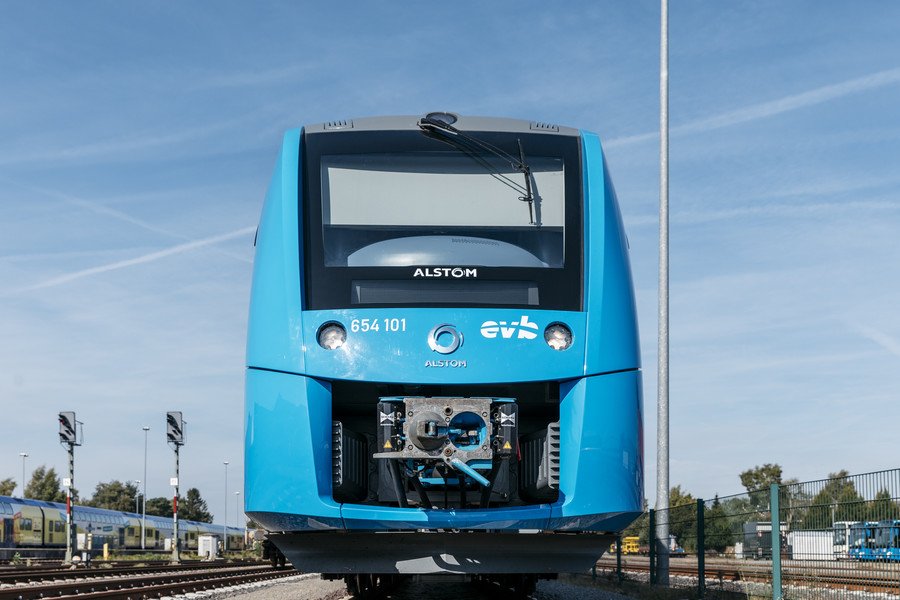Choo-choo without CO2: World’s first hydrogen-powered train enters service in Germany

One of Europe's largest railway manufacturers Alstom has launched the first CO2-emission-free train powered by hydrogen. Dubbed ‘hydrail,’ the Coradia iLint train began operating in Germany.
It is equipped with fuel cells which convert hydrogen and oxygen into electricity, thus eliminating pollutant emissions related to propulsion. Two such trains will enter commercial service according to a fixed timetable in Lower Saxony.
“This is a revolution for Alstom and for the future of mobility. The world’s first hydrogen fuel cell train is entering passenger service and is ready for serial production,” said Henri Poupart-Lafarge, Chairman and CEO of Alstom. “The Coradia iLint heralds a new era in emission-free rail transport. It is an innovation that results from French-German teamwork and exemplifies successful cross-border cooperation.”
A moment of pride! The Coradia iLint rolls into the station in @bremervoerdehttps://t.co/85xfAHnSx3#InnoTrans2018#hydrogen#emmissionfreepic.twitter.com/qhMSqVvvMw
— Alstom (@Alstom) September 16, 2018
The hydrail operates on electricity obtained from lithium ion batteries, powered by a fuel cell using a hydrogen tank stored on the train’s roof. The energy storage device is the pride of the developers, as it is controlled by an intelligent energy management system.
The low-noise, zero-emissions trains can reach up to 140 kilometers per hour. They will run on around 100 kilometers of the Buxtehude-Bremervorde-Bremerhaven-Cuxhaven regional line in Lower Saxony.

They will be refuelled by a mobile hydrogen filling station. The gaseous hydrogen will be pumped from a 40-foot-high steel container next to the tracks at Bremervorde station. One tank can run throughout the network for a whole day. A stationary filling station is scheduled to go into operation in 2021.
Last year, Alstom agreed with the local transport authority of Lower Saxony to deliver 14 hydrogen fuel cell trains and provide 30 years of maintenance and energy supply.
Fuelling a @Alstom Hydrogen iLint. pic.twitter.com/bKoeatWVa1
— Richard Clinnick (@Clinnick1) September 17, 2018
“The emission-free drive technology of the Coradia iLint provides a climate-friendly alternative to conventional diesel trains, particularly on non-electrified lines,” said Bernd Althusmann, Lower Saxony’s Minister of Economy and Transport.
“In successfully proving the operability of the fuel cell technology in daily service, we will set the course for rail transport to be largely operated climate-friendly and emission-free in the future,” he added.
For more stories on economy & finance visit RT's business section














